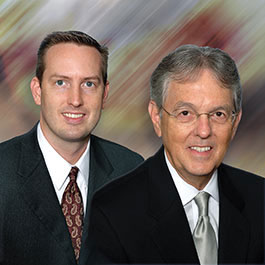Daylight Saving Time
The Energy Policy Act of 2005, daylight saving time (DST) was extended in the United States beginning in 2007. As from that year, DST begins on the second Sunday of March and ends on the first Sunday of November.
Some Interesting Stories
Germany was the first country to enact daylight saving time. It took World War I for William Willett's dream to come true, but on April 30, 1916, Germany embraced daylight saving time to conserve electricity. Weeks later, the United Kingdom followed suit and introduced “summer time.”
The Farmers
Daylight saving time in the United States was not intended to benefit farmers, as many people think. Contrary to popular belief, American farmers did not lobby for daylight saving to have more time to work in the fields; in fact, the agriculture industry was deeply opposed to the time switch when it was first implemented on March 31, 1918, as a wartime measure. The sun, not the clock, dictated farmers’ schedules, so daylight saving was very disruptive. Farmers had to wait an extra hour for dew to evaporate to harvest hay, hired hands worked less since they still left at the same time for dinner and cows weren’t ready to be milked an hour earlier to meet shipping schedules. Cultivated land or the cultivation of land interests led the fight for the 1919 repeal of national daylight saving time, which passed after Congress voted to override President Woodrow Wilson’s veto. Rather than rural interests, it has been urban entities such as retail outlets and recreational businesses that have championed daylight saving over the decades.
Confounding patchwork of local practices
After the national repeal in 1919, some states and cities, including New York City and Chicago, continued to shift their clocks. National daylight saving time returned during World War II, but after its repeal, three weeks after war’s end the confusing hodgepodge resumed. States and localities could start and end daylight saving whenever they pleased, a system that Time magazine described in 1963 as “a chaos of clocks.” In 1965 there were 23 different pairs of start and end dates in Iowa alone, and St. Paul, Minnesota, even began daylight saving two weeks before its twin city, Minneapolis. Passengers on a 35-mile bus ride from Steubenville, Ohio, to Moundsville, West Virginia, passed through seven-time changes. Order finally came in 1966 with the enactment of the Uniform Time Act, which standardized daylight saving time from the last Sunday in April to the last Sunday in October, although states had the option of remaining on standard time year-round.
Not everyone in the United States springs forward and falls back
Hawaii and Arizona, with the exception of the state’s Navajo Nation, do not observe daylight saving time, and the U.S. territories of American Samoa, Guam, Puerto Rico, the Virgin Islands and the Northern Mariana Islands also remain on standard time year-round. Some Amish communities also choose not to participate in daylight saving time. (Around the world, only about one-quarter of the world’s population, in approximately 70 countries, observe daylight saving. Since their daylight hours don’t vary much from season to season, countries closer to the equator have little need to deviate from standard time.)
Evidence does not conclusively point to energy conservation as a result of daylight saving
Dating back to Germany's William Willett, daylight saving advocates have touted energy conservation as an economic benefit. A U.S. Department of Transportation study in the 1970s concluded that total electricity savings associated with daylight saving time amounted to about 1 percent in the spring and fall months. As air conditioning has become more widespread, however, more recent studies have found that cost savings on lighting are more than offset by greater cooling expenses. University of California Santa Barbara economists calculated that Indiana’s move to statewide daylight saving time in 2006 led to a 1-percent rise in residential electricity use through additional demand for air conditioning on summer evenings and heating in early spring and late fall mornings. Some also argue that increased recreational activity during daylight saving results in greater gasoline consumption.
We hope you find our articles educational and helpful. We strive for accuracy but, if you see something that doesn't look right, you may contact us or leave a comment.
Daylight Saving Time ELG Facebook
You may have seen our TV commercials or read one of our many helpful articles on line. We have been helping people just like you for over 40 years. We are ready to help you. Call the Eshelman Legal Group today for your free initial no obligation consultation. Call: 1-800-365-0001 "We'll Make Things Right"
Call: 1-800-365-0001
The Conclusion
The attorneys at the Eshelman Legal Group understand that no matter how cautious you are, others may not be so careful, and accidents do happen. So we hope you don’t need to, but if you are in a situation where you need the advice of an personal injury attorney, the Eshelman Legal Group is here to help you. For over 40 years we have been assisting accident victims, and we are here to assist you too... because “We’ll make things right.”
Ask yourself this question… who does the adjuster work for? The adjuster works for the insurance company, they do not work for you.
In all matters involving personal injury it is essential that measures be taken promptly to preserve evidence, investigate the accident in question, and file a lawsuit prior to the deadline imposed by the Statute of Limitations. If you or a loved one is a victim of personal injuries, call Eshelman Legal Group LLC, now at 1-800-365-0001. The initial consultation is free of charge, and if we agree to accept your case, we will work on a Contingent Fee basis, which means we get paid for our services only if there is a monetary award or recovery of funds. Don’t delay! You may have a valid claim and be entitled to compensation for your injuries, but a lawsuit must be filed before the statute of limitations expires. The above is not legal advice. That can only come from a qualified attorney who is familiar with all the facts and circumstances of a particular, specific case and the relevant law. See Terms of Use.






